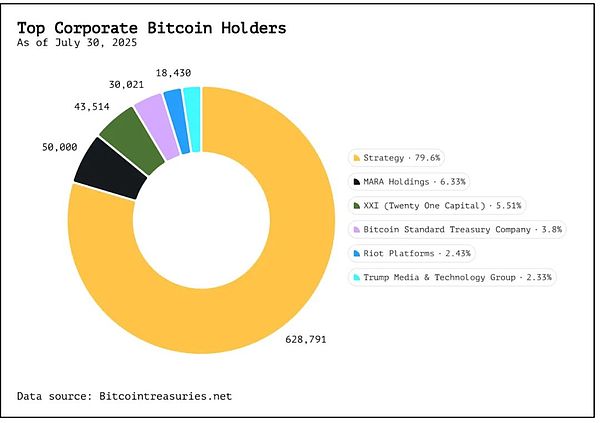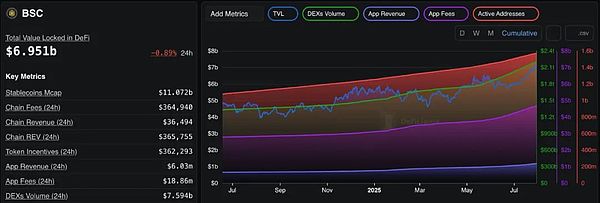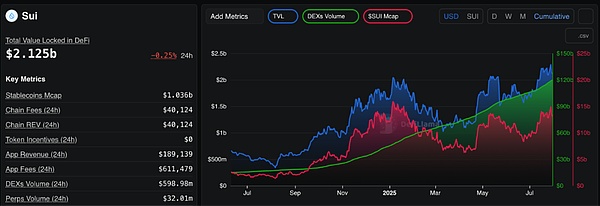
author:Prathik Desai

machineConstructCryptocurrencyIt is rapidly expanding beyond the Bitcoin standard, but not all altcoins are worth itHave a place in it.
The trend began with a bold attempt by Strategy (formerly MicroStrategy) and has evolved into an institutional movement worth over $100 billion, covering more than a hundred publicly traded companies.As the next wave of adoption unfolds, institutions face a more complex question: What altcoins (if any) are worthy of corporate reserve allocation besides the established three giants of Bitcoin, Ethereum and Solana?
The answer lies in the basic assessment of these assets: whether they can provide the sustainable income generation, real economics that institutional treasurers really need, and the depth of infrastructure that supports large-scale adoption.
It is no longer new for companies to establish cryptocurrency reserves.Bitcoin is the first to prove that cryptocurrencies can appear on the balance sheet of a business.Michael Saylor pioneered this model five years ago with Strategy, and its approach has now become a template for many other businesses.
Currently, 160 listed companies hold a total of 923,327 BTC, worth more than US$100 billion, accounting for 4.6% of Bitcoin’s current supply.

And they are continuing to increase their holdings.
Solana then emerged, which attracted businesses with low fees, high speeds and pledge rewards.Companies like Sol Strategies, DeFi Development Corp and Upexi hold about 3.3 million SOLs worth about $600 million.
Ethereum follows closely, offering similar staking rewards and decentralized finance (DeFi) use cases.As the second largest cryptocurrency, it is more than just a store of value tool.SharpLink and BitMine now hold more than 920,000 ETH (worth approximately US$3.5 billion), exceeding the amount held by the Ethereum Foundation.
Ethereum and Solana make up for the shortcomings of insufficient asset appreciation through their earnings generation capabilities.Staking not only brings benefits, but also supports the network security and throughput of the PoS chain.
All this reflects institutional adoption of altcoins, which may not have risen rapidly as much as Bitcoin’s prices.Institutions are now trying to explore whether these models can be expanded beyond Bitcoin, Ethereum, and Solana.
Like BNB, SUI, and XRPIs the currency worth entering the corporate reserves?Are they the next stage of institutional adoption, or are they the risky attempts of institutions under false hype?
BNB is the core driver of the Binance ecosystem, used to get discounts when paying transaction fees to support DeFi applications.Its on-chain activities, user base and staking rewards form a feedback loop similar to Ethereum or Solana, despite greater centralization risks.
The total lock value (TVL) of all DeFi protocols on Binance Smart Chain (BSC) is $6.96 billion.Meanwhile, BNB has a market capitalization of $111 billion, ranking fifth among all cryptocurrencies.This puts its market cap to DeFi TVL at a ratio of 16.15, well above Ethereum’s 5.48 or Solana’s 9.89, second only to Bitcoin among the top 20 big chains.
Compared to the actual capital locked in its DeFi ecosystem, BNB’s market value seems to be exaggerated.But that’s just part of the story.Unlike Ethereum, the value of BNB is also affected by centralized activities on Binance Exchange, including fee discounts, token issuance platforms and destruction.Enterprise control and quarterly destruction (those loosely linked to Binance’s revenue rather than DeFi activity) also played a role.In addition, a large number of retail users use BNB to conduct low-cost transactions.
BNB has nearly 2 million daily active addresses, with an average daily decentralized exchange (DEX) transaction volume of more than $7.5 billion, the highest of all chains, surpassing Ethereum and Solana.Binance also holds $158 billion worth of assets on its centralized exchange (excluding tokens it issues).
For institutions, this poses a dilemma.

BNB’s daily active users and DEX transaction volumes show its increasing dominance in various chains.But at the same time, the relatively small scale of its DeFi ecosystem shows a lack of depth.Obviously, the value of BNB comes from both Binance’s enterprise engine and centralized activities, as well as the open ecosystem on its chain.This makes modeling more difficult and perhaps makes it difficult for institutions to support BNB in a theory-driven way like Ethereum and Solana.
Perhaps institutions need a new metric to evaluate the value they see in an ecosystem like Binance.
As far as SUI is concerned, the chain is newer, has strong supporters, and is explicitly focused on game and developer tools.Over the past year, its DEX trading volume and TVL have grown exponentially and have grown in parallel with its market capitalization.

SUI’s market capitalization ratio to DeFi TVL is only 6.21, which is much lower than Solana and slightly higher than Ethereum.For a chain that was launched in 2023, its current DeFi activity level has surpassed Solana’s performance at a similar stage, and is more consistent.
XRP is not designed for DeFi, but for payment scenarios.Its appeal to institutions is mainly based on regulatory clarity and real-world applications.Ripple’s recent victory in court has opened the door to XRP ETF filings and considerations for corporate reserves.
Although the network processes more than 1 million transactions per day, its fee income is minimal (only 0.00001 XRP per transaction), and there is no stake opportunity due to no proof-of-stake consensus mechanism.Its market capitalization is now over $180 billion, far exceeding its actual economic activity.With the rise of stablecoins in the field of cross-border payments, the mismatch between XRP’s valuation and actual use brings uncertainty to its real-world utility.
Despite the stagnation of active address numbers and transaction fees, XRP’s market cap and price have been rising in recent years.This is a wake-up call for institutions looking to bet heavily on the cryptocurrency.
machineInvestors’ interest stems from trust in technology, but also from their desire to find new risk-adjusted returns.The cases of ETH and SOL show that staking can be a profit strategy and bring ongoing benefits.Because of this, the comparison between the two is clearer.ETH’s staking yield is about 4%, while SOL’s stakes around 6-7%.Business reserves holding these tokens can be pledged and the resulting gains are viewed as predictable compounding income, although they have to continue to worry that the drawdown will offset the gains.Many companies have adopted this approach at present.Upexi makes millions of dollars a year with the SOLs it holds.
BNB and SUI want to join the game as well.Their staking yields, usage metrics, and developer growth indicate that they are approaching institutional-level levels, and may even have reached it.But unlike Ethereum and Solana, they lack the same depth of third-party tools, staking service providers and liquid staking infrastructure, which are key to institutional participation in seamlessness.
Despite this, the market is still preparing.
Fund issuers are also awaiting U.S. approval this year for altcoin ETFs such as BNB, XRP and SUI.The assumption is that regulated packaging products will attract more retail investors, as Bitcoin and Ethereum ETFs do.But they must be wary of lessons learned from Ethereum ETFs, which struggled early on to find buyers.
If the pledge reward can be passed to the ETF holder, its appeal will be further enhanced.
Retail investors should recognize the essence of this moment: this is a screening phase.Tokens with stakes, real activities and developer commitments may be legalized through corporate reserves.Other tokens may just take advantage of the situation and collapse.The key revelation is understanding the true meaning of institutional interests.It is not always a recognition of quality.Sometimes it’s just an experiment on liquidity.
Nevertheless, the core question is whether the institutional interest in altcoin ETFs and reserves is justified.In some cases, yes, especially when the gains are combined with use; in others, it is not yet mature; and for some tokens, it may never be.But if Solana has taught the world anything, it is that the pattern of cryptocurrency reserves is no longer limited to Bitcoin and Ethereum.The next group of players has arrived and are busy pledging, expanding, and competing for institutional seats.







